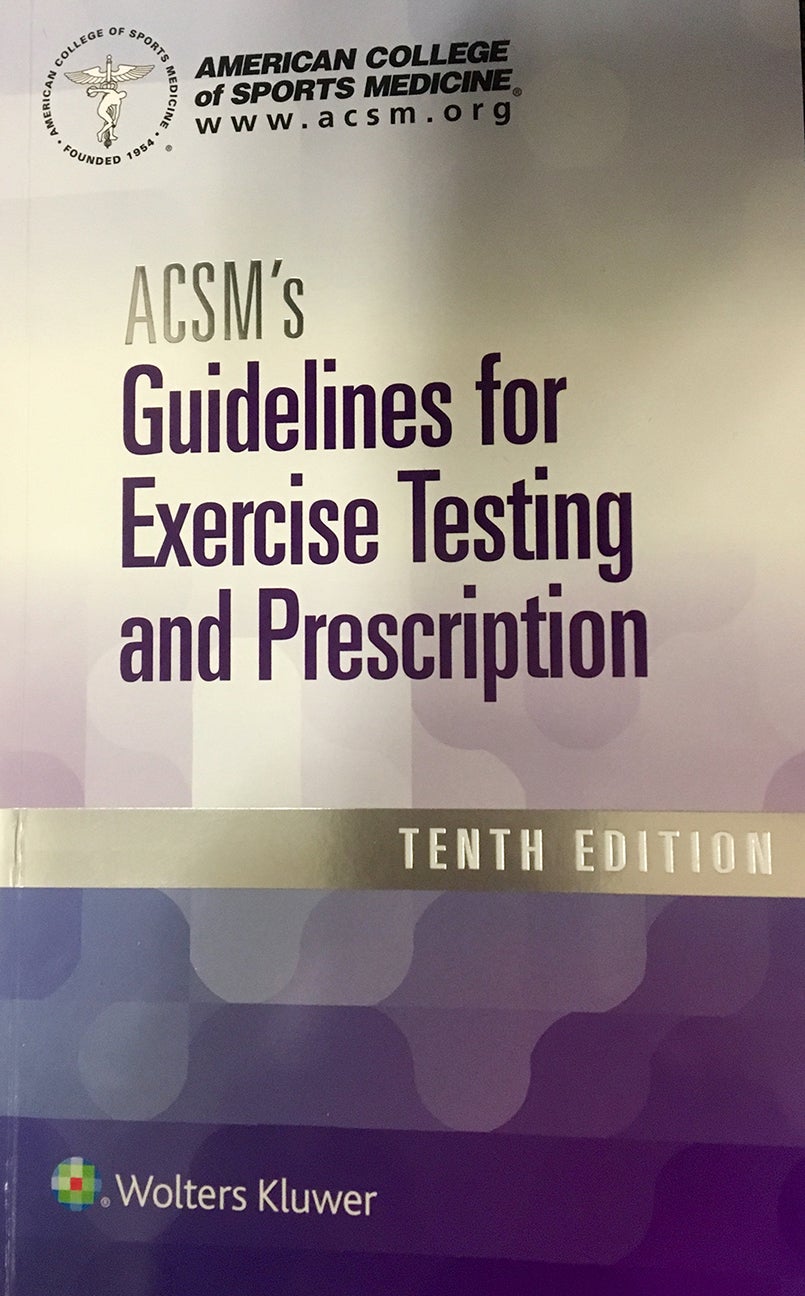KINGSTON, R.I., May 23, 2017 — Since 1975, exercise physiologists, doctors, nurses, physical therapists and health/fitness professionals around the world have turned to the American College of Sports Medicine’s (ACSM) “Guidelines for Exercise Testing and Prescription” as a trusted and comprehensive source of information.
The 10th edition of the book was recently published, and Deborah Riebe, associate dean of the University of Rhode Island’s College of Health Sciences and professor of kinesiology, is the senior editor. “It is used by exercise physiologists and other allied health practitioners who work with healthy populations in a preventative approach, and by clinical exercise physiologists, nurses and doctors who work in clinical settings such as cardiac rehabilitation. It is also widely adopted for use in the classroom,” Riebe said.
“ACSM’s Guidelines for Exercise Testing and Prescription” is the flagship title from the organization, which sets the standards for the exercise profession. This critical handbook delivers scientifically based standards on exercise testing and prescription in healthy and diseased patients. Founded in 1954, the American College of Sports Medicine promotes and integrates scientific research, education and practical applications of sports medicine and exercise science to maintain and enhance physical performance, fitness, health and quality of life.
 This text has long been considered the gold standard in sports medicine, exercise science and health and fitness, and reflects the latest scientific research, said Riebe, who is not the only member of the URI community to contribute to this book. Gary Liguori, dean of the College of Health Sciences, is an associate editor; and kinesiology faculty members Matthew Delmonico and Christie Ward-Ritacco serve as expert reviewers. Riebe asked Liguori to collaborate on the book before he arrived at URI in 2016 to lead the College, which is part of the University’s Academic Health Collaborative. The two already had worked together on committees and publications through the American College of Sports Medicine.
This text has long been considered the gold standard in sports medicine, exercise science and health and fitness, and reflects the latest scientific research, said Riebe, who is not the only member of the URI community to contribute to this book. Gary Liguori, dean of the College of Health Sciences, is an associate editor; and kinesiology faculty members Matthew Delmonico and Christie Ward-Ritacco serve as expert reviewers. Riebe asked Liguori to collaborate on the book before he arrived at URI in 2016 to lead the College, which is part of the University’s Academic Health Collaborative. The two already had worked together on committees and publications through the American College of Sports Medicine.
The book is updated every four to six years, Riebe said, delivering the latest evidence-based recommendations and guidelines. Each chapter includes succinct summaries and graphics for quick reference, said Riebe, who was an associate editor for the book’s 9th edition.
The 10th edition includes new material based on proven research, such as updated recommendations on pre-exercise health screening for people beginning a program on their own and expanded sections on clinical exercise testing and interpretation, high intensity interval training, fitness testing protocols, health behavior change and the risks of sedentary behavior.
Exercise physiologists, doctors, and others with expertise in specific areas of exercise science write the chapters, which undergo two levels of review by subject matter experts. One section might discuss how to approach an exercise program for a client with Parkinson’s disease, another lays out exercise and testing protocols for someone with cardiovascular disease and another dispenses guidelines regarding clients with back pain.
Corporate wellness centers, fitness facilities, bariatric surgery centers, cardiac rehabilitation programs and other organizations use the book as the go-to reference when making recommendations for exercise testing and regimens. “Exercise is the best medicine that healthy people and those with health challenges can take,” Riebe said of the book’s value across diverse populations.

